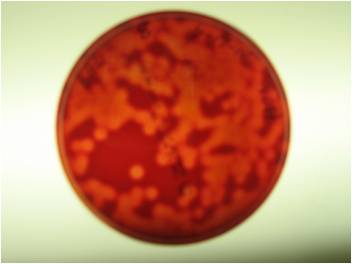Fungal aneurysm is a serious clinical condition with high morbidity and mortality. Staphylococcus aureus and Salmonella species the most common causative pathogens. Klebsiella pneumonia is rarely reported as a possible causative agent of fungal aneurysm, so we describe
-K. pneumonia bacteremia related fatal fungal aneurysm patients, despite appropriate antimicrobial and surgical treatment. A. Introduction >> << While fungal aneurysm is rare, constituting only 2. 5 of all aneurysms, and 1. 8 all Thoracoabdominal aortic aneurysm [
] This is a serious clinical condition with significant morbidity and mortality. Most fungal aneurysm caused by bacteria, and
Staphylococcus aureus and Salmonella species the most common causative pathogens [
]. In addition, other bacteria, including
Pseudomonas SPP. ,
Campylobacter fetus
streptococci. ,

Clostridium SPP. , A
Corynebacterium SPP. were reported as possible agents of fungal aneurysm [
]. Here we describe
K. pneumonia causes fatal bacteremia fungal aneurysm in a patient. 2. Case
47-year-old man with a history of hypertension presented fever, shortness of breath, discomfort in the chest in one day. He denied any other medical history, including HIV. Upon arrival in the emergency room, his body temperature of 38C, and blood pressure was 207/125mm Hg. Physical examination was unremarkable. Laboratory studies were as follows: white blood cells 14300/mm
with a predominance of neutrophils (89 8.) And C-reactive protein 213mg / l (normal reference 6 mg / l). Cardiac enzyme, arterial blood gas analysis, renal function and electrolytes were within normal limits. Chest X-ray showed no pneumonia patch, and urinalysis showed no pyuria. Computed tomography (CT) scan of the chest and abdominal aorta showed ocular hematoma of the arch to the level of the adrenal glands (Fig.
). Intravenous ceftriaxone (2 g every 12:00) was injected under the influence of infected aortic aneurysm after collecting two sets of blood cultures. Two days later, blood cultures grew K. pneumonia
which is only resistant to ampicillin. As he strattera without prescritpion continued with intermittent pyrexia, antibiotic was transferred to ceftazidime (2 g every 8:00) and gentamicin (80 mg every 8:00). After that, patients gradually ulyahlasya fever, and repeat blood cultures were negative. On the 20th day, a sudden rise in temperature (39C) were repeated, and hypotension developed. Repeat CT showed progressive dilated aorta and increased ocular hematoma (Fig.
). Emergency mode with aortic grafting was performed, but patients condition deteriorated gradually and the patient died eight days after surgery. Repeated blood cultures at hospital 20 samples excised aorta all increased
K. pneumonia. All K. pneumonia
isolates have the same antibioticgram, which is only resistant to ampicillin. The report reveals the pathology of atherosclerosis, inflammation, necrotic, organized hematoma, and bacterial accumulation in the aortic wall, consistent with fungal aneurysms. Finally, the diagnosis
K. pneumonia-related fungal aneurysm was confirmed. 3. Discussion
-
K. pneumonia is a member of the Enterobacteriaceae and are normal flora of the human mouth and intestines. Clinical manifestations
K
pneumonia infection is diverse and include pneumonia, bacteremia, intra-abdominal infections, skin / soft tissue infections and osteomyelitis. However, cases
K. pneumonia fungal aneurysms are limited, and diabetes is the most common risk factor that is present in most cases [
]. In this case, he did not have diabetes, which in contrast to previous reports [
]. Mortality from fungal aneurysms remains high, and early diagnosis is important because catastrophic hemorrhage or uncontrolled sepsis may occur without timely medical and surgical treatment. Although
K. pneumonia was a rare fungal pathogen aneurysm, appropriate antibiotic should be based on susceptibility testing, and surgical intervention can be justified only diagnosis
K. pneumonia infection is established. In our case, there was a transaction, while the rupture aneurysm and subsequent uncontrolled sepsis led to death. It must assume that some monitor and evaluation of clinical status and image may be necessary. If we can detect early progression of fungal aneurysms after failure of medical therapy, prompt surgical intervention can save lives. There is one important limitation in this study. Because no available isolate for further study, we can not assess the microbiological parameters such as hypermucoviscosity, capsular serotypes, availability
rmpA or genetic relationship of K. pneumonia isolates
clear molecular feature of these causative isolates and then exclude possibility of superinfection. However, based on our conclusion that it antibioticgram all isolates, they should have the same voltage. Finally, the case demonstrated the expanding range of infections caused by K. pneumonia
and increases the likelihood of K. pneumonia
as one of the causes of fungal aneurysm in immunocompetent patients, even in patients without diabetes . For prompt diagnosis and antibiotic therapy with or without surgical intervention are crucial for a better result. The authors declare that they have no conflict of interest. .




 Bacterial vaginosis
Bacterial vaginosis